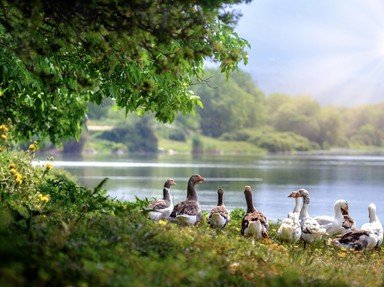Quiz Answer Key and Fun Facts
1. This majestic bird is from the family of the largest sea birds in the world. It has a wingspan of almost three metres (which is only a little smaller than another of its family) and could often be seen keeping pace with our ship. Made famous in the poem 'Rime of the Ancient Mariner', what bird is this?
2. These well dressed birds are very much the most hard core of all of the Antarctic species. They are year round residents, and they not only live mostly on the Antarctic mainland, but actually move further inland (sometimes as far as 120 km) to their annual breeding grounds, during the height of winter. What kind of penguins are these three?
3. Sometimes referred to as Cape Pigeons, this common seabird can be found feeding in Antarctica on fish and krill. Often found in flocks, following ships, what is the name of this beautiful bird?
4. These beautiful birds are actually cormorants, although they are known by another, more colourful name. They are the only cormorant brave enough to fly as far south as Antarctica. By what other name are they known?
5. When not breeding and caring for chicks, penguins spend enormous amounts of time in the water. How do they breathe?
6. This large seabird is a very aggressive bird when it comes to meal times. It can be either a scavenger, feeding on dead carcasses, or a predator, killing other birds. They can often be seen following ships, particularly fishing vessels. What bird is this?
7. These South Polar Skuas live at sea for a large part of the year, feeding mostly on fish. But when it's time to breed, they often make their nests close to penguin colonies. Why do they do this?
8. A less frequent visitor to Antarctica, the bird on the left is sometimes spotted there during the summer months. What is it?
9. This impressive bird, the largest seabird in the world, can spend weeks at a time at sea. In fact the naturalist on the ship said that they can spend up to two years at sea, without making land. They are able to do this because they don't need to drink water.
10. Although Adelie Penguins spend most of the year at sea, living on ice, they come to land to breed. What do they build their nests out of?
Source: Author
skunkee
This quiz was reviewed by FunTrivia editor
crisw before going online.
Any errors found in FunTrivia content are routinely corrected through our feedback system.

